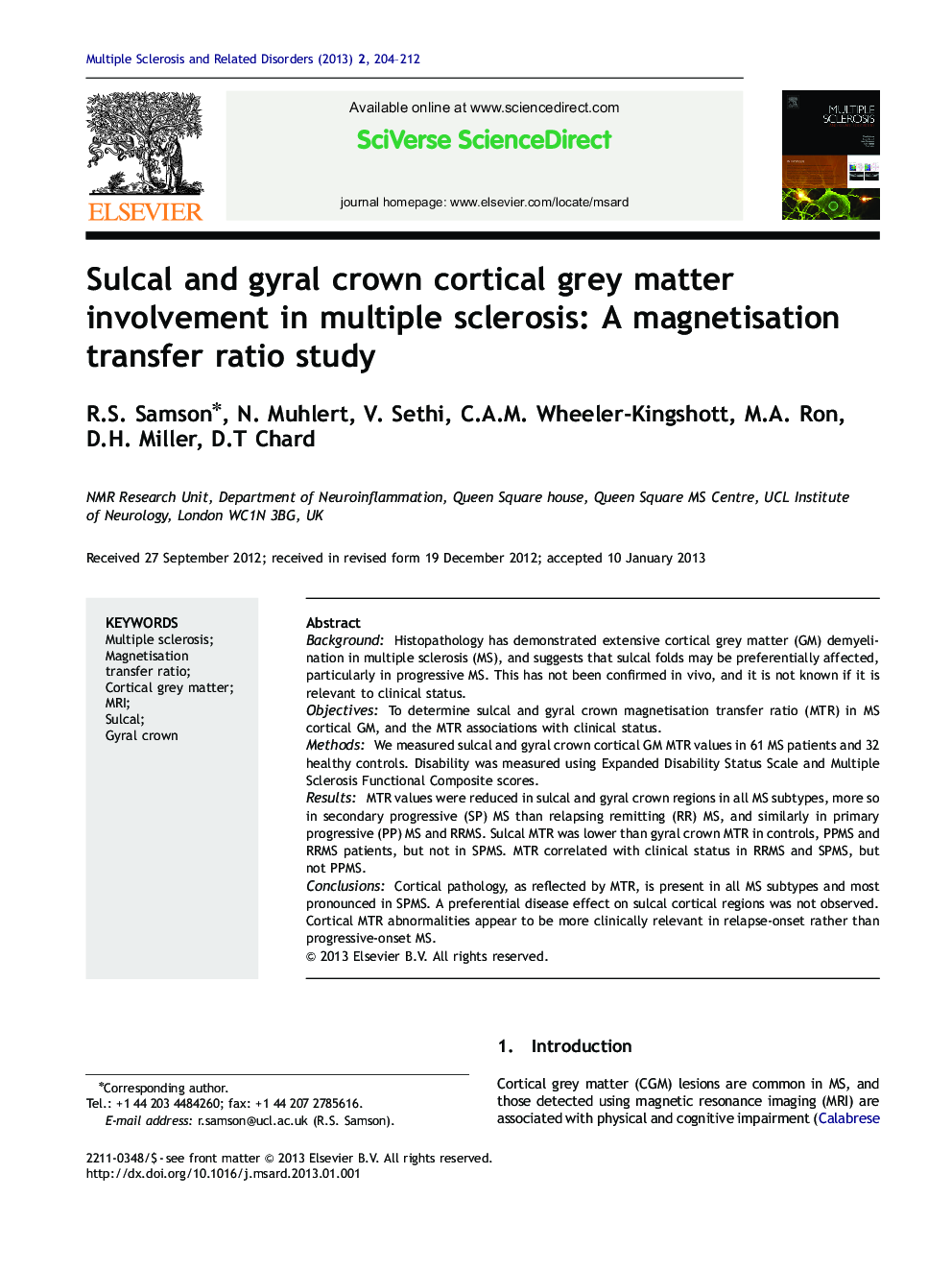| Article ID | Journal | Published Year | Pages | File Type |
|---|---|---|---|---|
| 2823914 | Multiple Sclerosis and Related Disorders | 2013 | 9 Pages |
BackgroundHistopathology has demonstrated extensive cortical grey matter (GM) demyelination in multiple sclerosis (MS), and suggests that sulcal folds may be preferentially affected, particularly in progressive MS. This has not been confirmed in vivo, and it is not known if it is relevant to clinical status.ObjectivesTo determine sulcal and gyral crown magnetisation transfer ratio (MTR) in MS cortical GM, and the MTR associations with clinical status.MethodsWe measured sulcal and gyral crown cortical GM MTR values in 61 MS patients and 32 healthy controls. Disability was measured using Expanded Disability Status Scale and Multiple Sclerosis Functional Composite scores.ResultsMTR values were reduced in sulcal and gyral crown regions in all MS subtypes, more so in secondary progressive (SP) MS than relapsing remitting (RR) MS, and similarly in primary progressive (PP) MS and RRMS. Sulcal MTR was lower than gyral crown MTR in controls, PPMS and RRMS patients, but not in SPMS. MTR correlated with clinical status in RRMS and SPMS, but not PPMS.ConclusionsCortical pathology, as reflected by MTR, is present in all MS subtypes and most pronounced in SPMS. A preferential disease effect on sulcal cortical regions was not observed. Cortical MTR abnormalities appear to be more clinically relevant in relapse-onset rather than progressive-onset MS.
► MTR abnormalities are present in all MS subtypes and are most pronounced in SPMS. ► Sulcal MTR was lower than gyral MTR in controls, PPMS and RRMS, but not SPMS. ► MTR correlated with clinical status in RRMS and SPMS, but not PPMS. ► Cortical MTR may be more clinically relevant in relapse- than progressive-onset MS.
